Background
The short title for this report is SOER (2015). That simplicity masks a complex, comprehensive set of assessments of Europe’s environment at this point in time. The main “Synthesis” report is the every-five-year review of the state of the environment in the European Union (EU). The second report is an “Assessment of global megatrends” that places what is happening in Europe in the larger global context, focusing on11 issues. There is also a set of 25 briefing documents that address a range of European issues, such as agriculture, biodiversity, energy, forest, etc., which are considered in more detail than in the Synthesis report. We also have a set of 9 briefings covering cross-country comparisons based on common indicators (e.g., transport, waste, air pollution). There are 39 country briefings, based on the reports from 33 EEA member countries, and 6 countries from the Western Balkans. Finally, there are 3 briefings with an overview of selected regions: Arctic, Black Sea, and Mediterranean Sea.
That’s a lot of material!
The obvious question is, how does one digest and review such an agglomeration of assessments? Not easily. The best that can be done, at least by this writer, is to provide a sense of the moment. That is, from this series of reports, what can we say about what is happening now with the environment in Europe, and how does it relate to what is happening across the globe.
The Synthesis Report: Contextualisation
At the beginning of the Synthesis report (“Part 1 Setting the Scene”), the European Environment Agency (EEA) spends some time placing this current assessment in the context of earlier and still applicable EU policies and strategies. Normally such an approach would have seemed a perfunctory review of all that’s been accomplished just before we’re told how bad things are getting. But here, and now, the contextualisation works well in light of the recent increase in attacks from certain business quarters, and their political supporters, on environmental regulations.
This review of the history includes the basic underlying principles that guide environmental regulation and enforcement: the precautionary principle, the polluter pays principle, the preventive action principle, and the rectification of pollution at source. It also covers the EU 7th Environment Action Programme (EAP); the integration between environmental, economic and social policies which is at the core of the Treaty on Europe; the integration of environmental concerns with sectoral policies, e.g., in the agriculture and transport sectors; and the EU 2020 Strategy focusing on creating a smart, sustainable and inclusive economy.
In effect, the EEA reminds us that there is a long and deep commitment by the Member States to an array of specific, broad environmental protection efforts in the EU. It is hoped that the European Commission, and business lobby, is reminded of that commitment, which has produced the advances detailed in the EEA report.
The Synthesis Report: Global Dimension
So how is that deep commitment serving our needs now? The main Synthesis report combines the significant developments occurring in 38 countries, and across the globe, so it is not surprising that the review lapses at times into very abstract language. See, for example, the last 4 paragraphs of Section 3.10, at 79-80, which borders on being incomprehensible, at least for all but the most technocratic of us. We complain that scientists need to learn how to communicate better with the wider public on climate change if progress has any hope. That’s a lesson we need to apply to ourselves and others trying to reach the wider public, which includes politicians. Despite this criticism, the overall report captures, in a most useful way, this moment in the environmental movement in Europe.
In its initial stages, environmental protection in the EU, as elsewhere, focused on discrete polluting events, such as the release of toxic substances typically from a single facility or site. The EEA report refers to these types of events as “pollution from known, stable sources.” At 155. Examples are Chernobyl, the Exxon Valdez oil spill, Bhopal, and numerous similar, smaller events. Usually the impacts were felt locally, although Chernobyl adversely impacted reindeer in Norway and Sweden as well as sheep in Scotland and Northern Ireland. Sometimes there was a wider release as in the London Fog of 1952 disaster caused by thousands of households burning coal fires, combined with a weather system and temperature inversion. See Hernan, This Borrowed Earth. Of course these kinds of events and disasters are reoccurring, as we have witnessed in the BP Gulf oil spill, the nuclear disaster at Fukushima, and the air pollution plaguing China. But EU policies have significantly limited adverse environmental effects from industrial production in the past 40 years.
Over the past several decades we have begun to face a series of more complex, geographically dispersed environmental conditions that are creating greater challenges. Forty years ago there was little discussion in the environmental community about energy or climate change. Now those topics dominate all our talk. The sources, distribution, and effects of energy reach entire areas, countries, and global regions. Climate change is caused by each and every one of us. Of course, some (fossil fuel industries) contribute a whole lot more than others (individuals in developing countries). Climate change also affects each and every one of us, everywhere on the planet, with developing countries getting the worst of the impacts. Biodiversity is threatened by economic development, land use change, and climate change, all on a global level. Entire species are at risk of disappearing.
These developments add a global dimension to the problems, including the need to engage with many people in many countries to address the problems. Further complicating the problems, and solutions, is the growing globalization of the economy, with multi-national companies expanding their influence wherever they operate, and at times opposing efforts to curtail their more destructive practices.
With the globalisation of the problem and impacts, what happens in one place does not stay there. Emissions of greenhouse gases (GHGs) in countries in mid-latitudes migrate to the Arctic and elsewhere, melting glaciers and sea ice and threatening wildlife in the Arctic. Sea level rise floods everything in its path. Methane from cows in Ireland affects the atmosphere undermining attempts to meet GHG targets. Climate-induced weather conditions in Africa impel species to migrate north, or die.
The interdependencies of forces operating on our environment can be seen in the well-intentioned movement to substitute renewable sources for oil in fuel, e.g., for transport. The market-based global economy rushed in to supply the biofuels needed to satisfy regulations on replacing fossil fuels. Unfortunately, most biofuels are produced from materials that are also used to produce food or that are produced on land used to produce food. The biofuels offered a better price, and profit, and land was converted from producing food to producing fuel substitutes. The resulting food shortages caused rioting in places.
Another example of the complexities we face is the energy rebound effect. We develop technological improvements to make more efficient cars and home energy systems, which after the initial capital expenses result in lower maintenance costs, which encourages people to drive farther or more often and to use more energy since it is cheaper than before.
It’s all getting very complicated. And we are all having trouble trying to find language that will reflect the complexity and perils at stake. Talking about the release of toxic materials from a single source seems almost nostalgic now.
The Synthesis Report: European Trends
After addressing the wider context, the EEA report covers three large issues affecting the EU as a whole. The three trends, or key areas, across the EU are: protecting the natural capital that supports economic prosperity and human well-being; stimulating resource-efficient, low-carbon economic and social development; and, safeguarding people from environmental health risks. At 10.
While Europe’s air and water have generally improved, by reducing the release of a myriad of pollutants, Europe’s natural capital, or natural resources, including biodiversity, remain at significant risk. Between 60 and 77% of protected species and habitat types are in unfavourable conservation status, and the goal to halt biodiversity loss by 2020 will fail. All of these resources will deteriorate further as climate change impacts accelerate. The Synthesis report provides much detail on specific aspects of the status of natural capital and biodiversity (Chapter 3), but here we will merely point our some details that help to define where we are now and to encourage you to read the full report.
The growing interdependency of the economy and environment has not led to a pricing of the costs of damages to the natural capital.
Biodiversity loss is driven in part by high per capita consumption, and with a growth in population to 9 billion by 2050, at the same time there is a dramatic growth in middle classes, this pressure will intensify.
The growing global economy masks some of the effects of biodiversity loss as production activities creating the loss are happening far away from those who consume what is produced. Out of sight, out of mind.
Natural habitats will decline, replaced by commercial/industrial activities, mining, construction and other activities that constitute a “land take.” These changes are long-term and will not easily be undone, if at all.
The population growth, as well as agricultural practices, including excessive nitrogen loadings, will continue to stress surface water bodies, especially rivers and transitional waters, through eutrophication.
Commercial fishing stocks have been improving in the EU Atlantic and Baltic waters but not in the Mediterranean and Black Sea.
A resource efficient and low carbon society has moved forward recently with GHG emissions subject to hard targets decreasing 19% since 1990 despite a 45% increase in economic output. This decoupling of GHG emissions from economic growth has been accompanied by a drop in total resource use by 19% from 2007, largely from less waste and more recycling in almost every country in the EU. Of course the economic recession helped put a rosy gloss on these numbers, and it remains to be seen if they stay rosy once the economy builds back up, assuming it does. The GHG and other targets for 2020 look relatively achievable, but the 2030 targets have been scaled back for energy efficiency and renewables, and over the long term the GHG prospect is less bright, as existing environmental regulations do not seem sufficient to reach the targets for 2050, and beyond. The recent attacks by some in the industry/business lobby and by the new European Commission on environmental regulations do not bode well for this long-term outlook.
Part of our improvement in more efficient use of materials comes from our exporting some material extraction and manufacturing to areas outside the EU.
Per capita waste generation declined 7% between 2004 and 2012, so that the Circular Economy (maximizing use of resources to reduce demand on virgin resources) becomes more possible. Yet at the same time the current Commission is undermining the Circular Economy Package.
Reaching the 2020 GHG targets was helped by recession, but only by half and the rest of the achievements happened only because of EU policies and measures (regulations).
The EU 2050 GHG targets likely will be missed unless there are further policy developments, also known as more regulations.
Emissions from the transport sector now accounts for 24% of total emissions, and air travel was at an all-time high in 2011.
Overall industrial emissions have been subject to significantly more control but the air pollution from these sources remains a major problem. Yet, again, the European Commission is moving to undermine the earlier proposed Clean Air Policy Package.
In order to achieve a sustainable economy, we need to move to “absolute decoupling” where production increases but resource use declines, rather than “relative decoupling” where resource use grows less rapidly than economic output.
Promoting diesel vehicles no longer makes sense as they emit less CO2 than petrol cars but more particulate matter and nitrogen oxides, which constitute immediate threats to health.
The number of households in the EU grew 23% between 1990 and 2010, as result of increasing wealth, aging of population, and lower average household size.
With regard to environmental risks to people’s health, the results are mixed. There have been significant improvements to drinking and bathing water, and a reduction in use and disposal of hazardous pollutants. But the growing use of chemicals poses a threat, and the air pollution, particularly in urban areas, remains at dangerous levels, especially for fine particulate matter (PM2.5) and smaller PM.
The focus on chemicals now falls on cumulative effects from exposure to multiple chemicals, and to endocrine disrupters, as well as on new technological developments, such as nanotechnology and GMOs.
The aging population is a vulnerable group. Currently 17.5% of people in EU are 65 years or older, and by 2060 that percentage will reach almost 30%.
Particulate matter (PM2.5) is the cause of about 430,000 premature deaths in EU-28.
Air pollution remains particularly risky in urban areas where currently 73% of Europeans live and 82% will live by 2050.
Climate change will continue to exacerbate many of these health risks, especially for vulnerable populations — elderly, children, people with chronic diseases, socially deprived and traditional peoples — and for vulnerable geographic areas, including the Arctic, Mediterranean basin, urban areas, mountain and coastal areas, and river flood-prone areas.
Climate change impacts will also deepen already serious socio-economic imbalances in the EU.
The Synthesis Report: Looking Ahead
The Synthesis report ends with two sections on “Looking Ahead.” Ending such a comprehensive assessment is never easy, and trying to offer concrete solutions often is elusive. In its wrap-up, the EEA SOER report argues that the production and consumption system on which our environment rests has to undergo a fundamental transformation if the EU hopes to satisfy the goals of the 7th EAP and meet the various targets for 2050 and beyond. That is a most ambitious step and probably needs another major report to even suggest how that might happen. Instead the wrap up gets bogged down in a series of abstract layers of approaches (mitigate-adapt-avoid-restore plus knowledge/policy/implementation gaps) that might help. They don’t really, but along the way of this “look ahead” some useful, concrete observations are made that might help.
Past experience suggests that setting short and medium-term targets and actions enables progress in reaching longer-term objectives.
Implementing and enforcing already existing environmental laws would go a long way to achieving many targets. Failing to implement environmental policies, including the costs of infringement cases, wastes about €50 billion a year.
While energy and transport have quantitative low-carbon targets, current subsidies and supports for agriculture are not underpinned by resource efficiency principles.
“Prosumerism” reduces the distinctions between producer and consumer and brings the two together, as with distributed energy systems.
Fiscal measures remain underused for sustainability, as reflected by the fact that Europe’s fossil fuel and nuclear sectors still benefit from significant subsidies and other supports.
SOER: Assessment of Global Megatrends
Throughout the Synthesis report, the global dimension of environmental matters sits center stage. What happens to the air and water across the globe affects what happens in Europe. Europe’s GHGs invade space everywhere. Environmental problems associated with supply chains are exported by Europe to China and other countries. The effects from growing middle classes in developing countries are felt in Europe.
In this separate assessment we find some of the backstage details affecting our global environment. The assessment focuses on how global developments impact on resources, particularly food, water, energy, materials and ecosystems. We can offer just a few tidbits on these and other global trends and encourage you to explore the issues further in the full report.
For food, it is expected that meat consumption will increase by more than 70% between now and 2050. Since Europe depends heavily on imported foods, developments elsewhere (e.g., climate change, lack of water, pollution) will affect the price and availability of food resources. Population growth, increasing consumption, and agricultural intensification will create stresses on water supplies in most areas, especially in southern Europe. For energy, which is fast becoming a global market, demand is projected to increase by 30-40% over the next 20 years. Lack of cooling water due to climate change will adversely affect nuclear power, while bioenergy crop farming will increase destruction of habitats and forestry. For materials, there has been a 10-fold increase in demand since 1990, and it is estimated to double by 2030. Critical raw materials, such as those necessary for photovoltaics, wind turbines and low-carbon vehicles, are limited and often under the control of one country, such as China. For ecosystems, the targeted halt in decline has not worked as global terrestrial biodiversity will decline by at least another 10% by 2050. Equally disturbing is a perverse form of decoupling where industrial areas and infrastructure expanded by 45%, and residential areas by 23%, even while population increased only by 6%. Fewer people are displacing more and more land.
SOER 2015: Remaining Reports
The SOER report also includes a sub-report on European Briefings, which covers the “Context,” “Key Trends,” and “Prospects” for 25 key environmental themes, grouped in three clusters: environment; socio-economic; and systemic perspectives. The issues range from Agriculture to Waste.
Another sub-report is on Cross-Country Comparisons that provides an analysis of progress across European countries for these selected 9 topics: Agriculture; Air pollution; Biodiversity; Energy; Freshwater quality; Mitigating climate change; Resource efficiency; Transport; Waste. Each section includes material on “Setting the Scene,” “Policies, targets and Progress,” and “Prospects.” In addition at the end of each section there is further material on “Countries Perspectives” where a few countries provide country-specific information on the topic.
Finally, there is a sub-report on Countries and Regions covering an overview of the state of the environment across 39 European countries, based on national state of environment reports. Regional briefings cover three regions (Arctic, Black Sea and Mediterranean Sea), identified as priority areas in the EU’s 7th Environmental Action Programme. Each of the individual country reports was prepared by the agency of that country and they generally represent a condensed version of more lengthy assessments prepared periodically, and presumably available on each country’s website. There is a very wide range of details and usefulness in these reports.
While it is useful to find all the country reports, or at least short versions, collected in one place, the weakness is that, given their purpose, they are very broad and general characterisations of what is happening and they tend to emphasize the positive aspects.
The report for Ireland, for instance, provides four very broad, general “challenges” followed by some policy responses that support the government’s efforts to meet the challenges. The government’s actions seem positive but some not so positive details are missing. A new public water utility company, Irish Water, has been established to take over responsibilities from local authorities and it is making progress on improving a weak infrastructure, but the government is facing concerted opposition, with some violence, to installation of water meters, in part because of the inadequacies of preparing the public for this initiative. New national strategies on peatlands are in the works, yet the government’s past and continuing stewardship over bogs has been highly criticized, at home and in the EU. The ban on dirty, smoky bituminous coal was applied to Dublin in 1992, and later in some other towns, but not applied across the country where towns are experiencing unhealthy air. A new climate bill that is highlighted has been published but it fails to require Ireland to do anything except what it is obliged to do under EU law, and a climate change advisory committee lacks the independence that a legislative committee and all the eNGOs demanded.
It is not clear these condensed, general reports contribute much to the EEA independent assessments of what is happening across the EU and within countries and regions. Instead of country-generated reports, it might be interesting, certainly more fun, if future EEA reports substituted reviews of each country’s efforts by stakeholders within that country, including business/industry groups, eNGOs and others.
Conclusion
We should not be misled, or depressed, by all the complications or by the lack of progress in international negotiations. Yes, protecting the environment is becoming more complicated and climate change action, biodiversity protection, and other environmental matters desperately need global cooperation. But small group and individual action still matters. After the 1970s oil crisis some residents in Copenhagen started to bicycle to work, then social support and social pressure encouraged more and more to join the early starters. Now half of the inhabitants of Copenhagen bicycle to work every day.
Faced with inadequate action at the global level, cities and sub-national levels of government are more and more adopting cross-border projects, e.g., California and Quebec’s linking of carbon markets in 2014. Consumers and shareholders can affect global production and consumption practices through their purchasing and investment decisions. Boycotting and divesting remain viable alternatives to silence and frustration. Our individual actions can lead by example for other individuals. When a behavior is visible to others and adopted, it sometimes snowballs, picking up more and more followers as it moves forward. The evocation to “think global, act local” still resonates.
While we criticise business/industry at times, it is important to remember that there are progressive voices out there that we should listen to and join. Much of the dogma about deregulation and burdens on businesses and industries comes from lobbying organizations that often have to play to their lowest denominator. Furthermore, the most vociferous individual businesses (e.g., the fossil fuel Koch Brothers) are either the ones with the most to lose from progress from climate change and other advances, or those who have a limited ability to think big or long-term, namely smaller or marginally successful businesses.
As Hans Bruyninckx, EEA Executive Director, notes in a press release associated with the SOER 2015, the recent World Economic Forum reported that the top global risks to business for the next decades are less economic and more environmental.
Sources
European Environment Agency, SOER 2015 — The European environment — state and outlook 2015: A comprehensive assessment of the European environment’s state, trends and prospects, in a global context (March 2015). www.eea.europa.eu/soer
European Commission, Environment Action Programme to 2020 ec.europa.eu/environment/newprg/index.htm
European Environmentalism at a Crossroad, or Is it Really a Roadblock? In Reports section of irish environment online magazine (Jan 2015). www.irishenvironment.com/reports/european-environmentalism-crossroad-really-roadblock/
Businesses Need More Regulation, Not Less: EEA Report on Costs of Air Pollution from Industrial Facilities in the ieBLOG section of irish environment magazine (March 2015). www.irishenvironment.com/blog/businesses-need-regulation-less-eea-report-costs-air-pollution-industrial-facilities/
Business in the US Is Becoming Climate Riskier, But At What Cost? in the Reports section of irish environment magazine (March 2015). www.irishenvironment.com/reports/business-us-becoming-climate-riskier-cost/
Hans Bruyninckx, Executive Director, EEA, “Europe shouldn’t be afraid of leading the world on environmental regulation.” Editorial in EEA Newsletter (March 2015). www.eea.europa.eu/articles/europe-shouldnt-be-afraid-of/
Robert J. Shiller, “How Idealism, Expressed in Concrete Steps, Can Fight Climate Change,” The New York Times (27 March 2015). www.nytimes.com/2015/03/29/upshot/how-idealism-expressed-in-concrete-steps-can-fight-climate-change.html


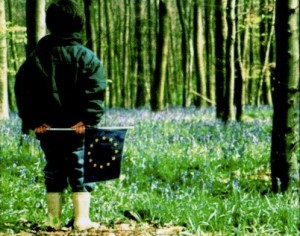
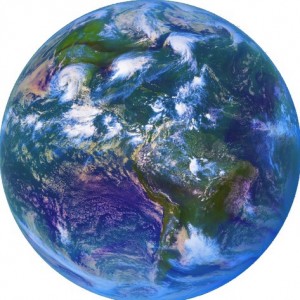
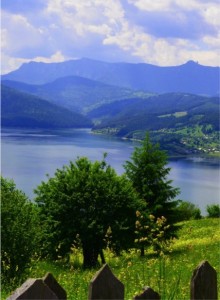
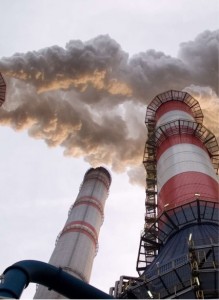
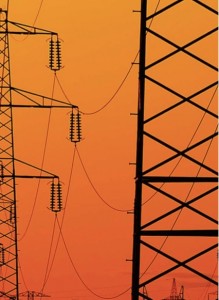

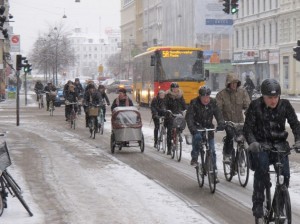
No comments yet, add your own below